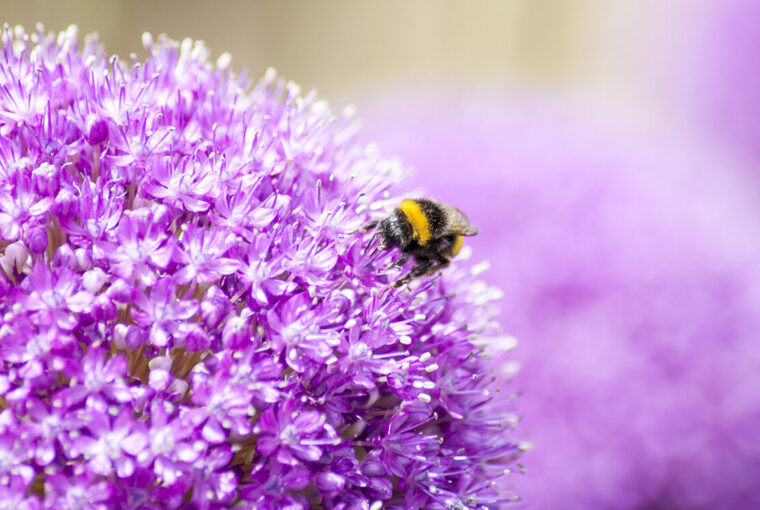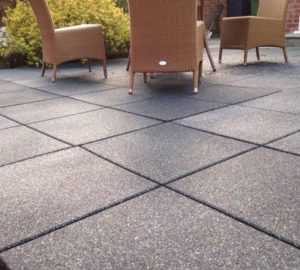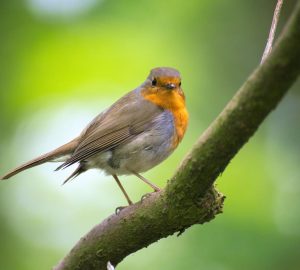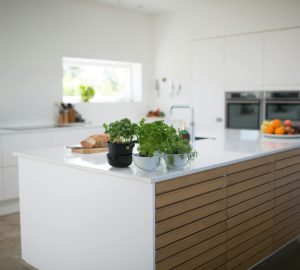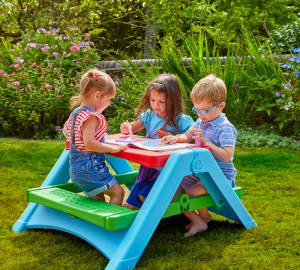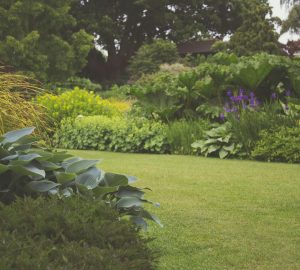Bees are crucial to the environment yet their numbers are dwindling across the world due to climate change, exposure to pesticides and loss of habitat. We need to do everything we can to encourage and support the bee population. After all, we rely on them to pollinate many plants that we need for food production.
Bees are crucial to our economy – without them it would cost UK farmers £1.8 billion a year to pollinate our crops.
Friends of the Earth
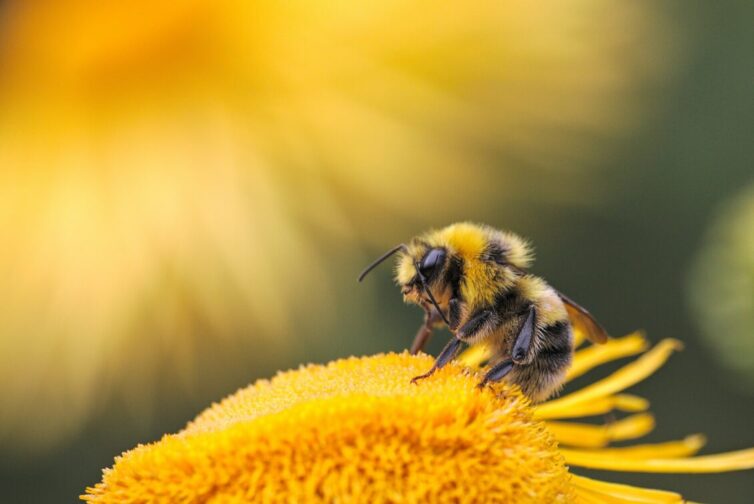
Why not add a splash of colour to your garden and provide sustenance for our precious pollinators by planting a batch of bulbs this autumn? Now’s the perfect time to plant flower bulbs ready for spring.
Huge garden? You lucky thing. Plant a mixture of colourful bulbs in groups along your border. Small or no garden? You can still get involved. Put your bulbs in a pot and place it on your patio or by the back door!
This gardening project is suitable for beginners. Whether you’re green at gardening or proficient at planting you can get involved.
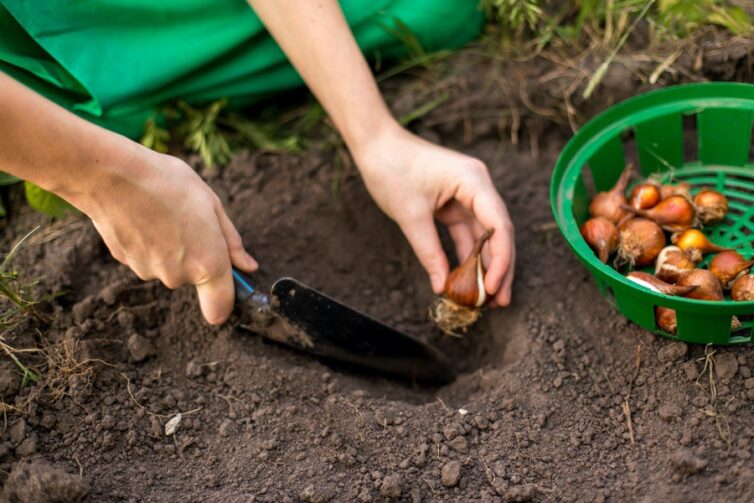
Planting spring bulbs in a border:
First, dig a hole. It should be approximately two-three times the depth of the bulb. Then, place your bulb in the hole with the shoot facing upwards. Replace the soil, patting firmly. If you’re planting lots of bulbs, space them at least twice the bulb’s width apart. If the ground is moist, you probably don’t need to water your bulbs after planting. In fact, there’s no need to water them until the start of spring.
Planting spring bulbs in pots:
You’ll need the right type of compost. Look for one that’s specifically created for planting bulbs. It often contains the perfect ratio of peat to grit (needed for drainage). In terms of spacing, aim for one bulb’s width apart. Water your bulbs after you’ve planted them and regularly when they begin to grow. A high potassium fertiliser will promote good flowering.
Top tips:
It’s recommended that you plant your bulbs quickly, ideally as soon as you acquire them.
Remember, flower bulbs should be dry, leafless, rootless, hard and show no signs of rot. If your bulbs show one or more of those properties, they’re not healthy so you may wish to discard them.
If you choose perennial bulbs, they will flower year after year.
Not sure what to plant? The following bulbs will offer our flying friends plenty of variety throughout the spring:
Crocus bulbs
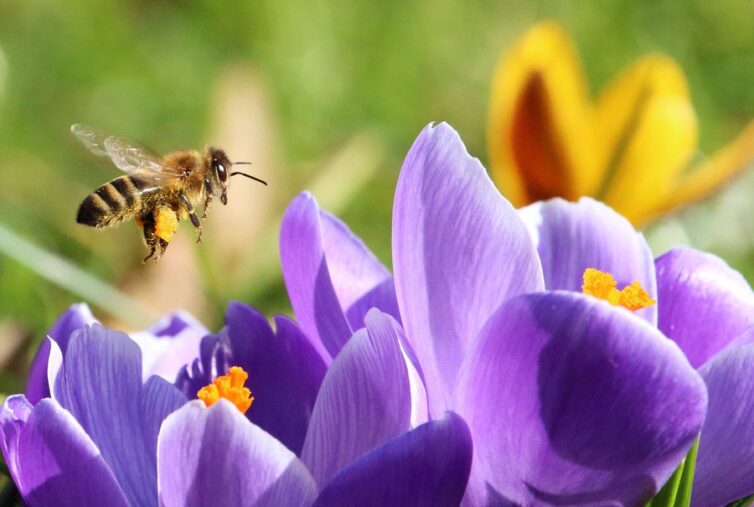
The crocus is a must-have for the bee-friendly garden. The nectar-rich plants are one of the first to flower in spring, usually blooming between February and early March, ideal for hungry bees emerging from hibernation. The purple varieties seem to be popular with bees but they do come in a range of other colours too.
When bumblebee queens emerge after hibernating they’re often starving, so they need all the food they can find […] Crocuses are among the best early flowering food for bees if they’re planted in the sun where the bees like to forage.
Urban Bees
Tulip bulbs
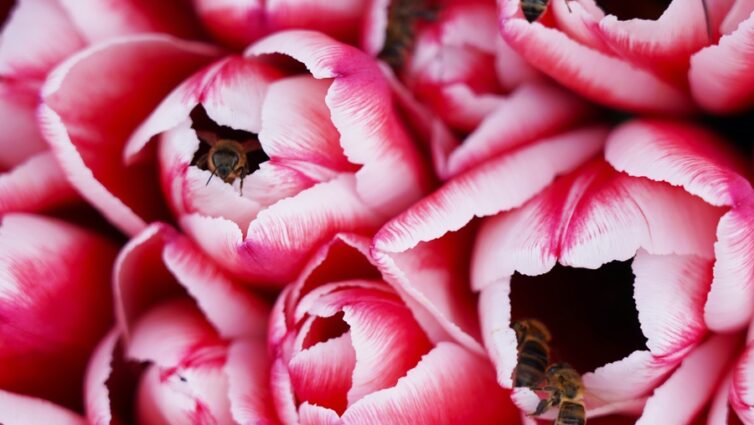
Once your crocus bulbs have flowered, it’s the tulips’ turn to bloom! Bees love this cheery flower, which have an accessible shape and burst with pollen, the protein key to bee reproduction and surival.
The Royal Horticultural Association of Holland recognises over 3,000 different cultivated tulips, so you’re certain to find a variety you love. Mix and match to create an eyecatching display. Not sure where to start? Most suppliers sell packs of tulip bulbs that will flower at the same time and look great together. For example, the stunning Marshmallow Collection Tulips from Dutch Grown (pictured below).
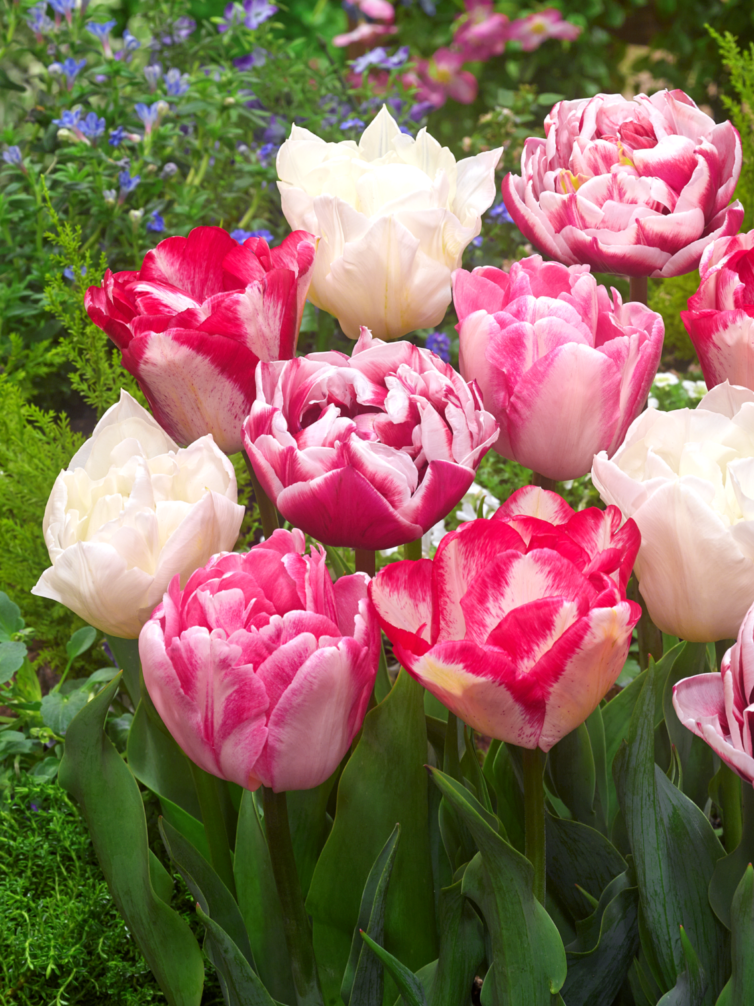
Grape Hyacinth bulbs
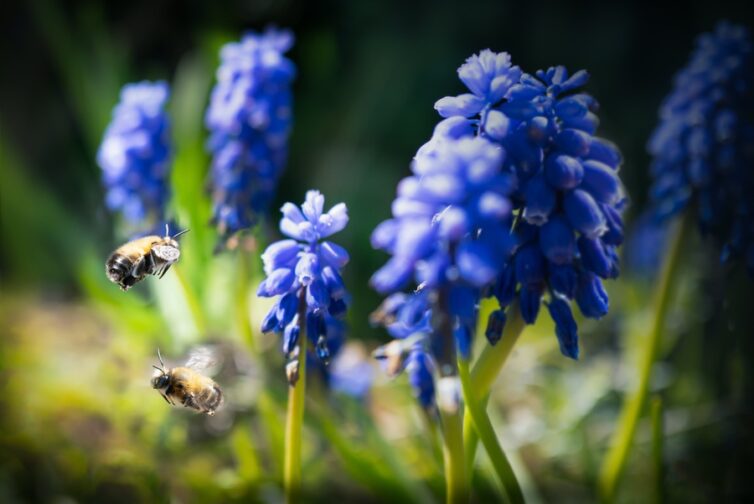
Grape hyacinths are quick to plant, simple to look after and very hardy. Typically, they start to flower in April. The bright blue blooms emit a sweet fragrance that attracts droves of bees. Plant grape hyacinth bulbs to add a bright pop of colour in your border.
Allium bulbs
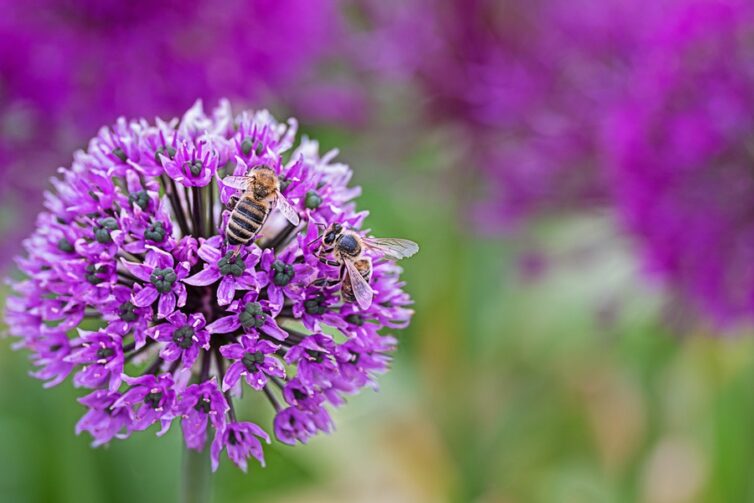
Bees (and butterflies) can’t get enough of allium flowers. This striking plant is easy to grow and it flowers from spring into early summer. They come in a range of colours, from mauve to pink to yellow to white. Pepper your border with the punchy purple flower.
